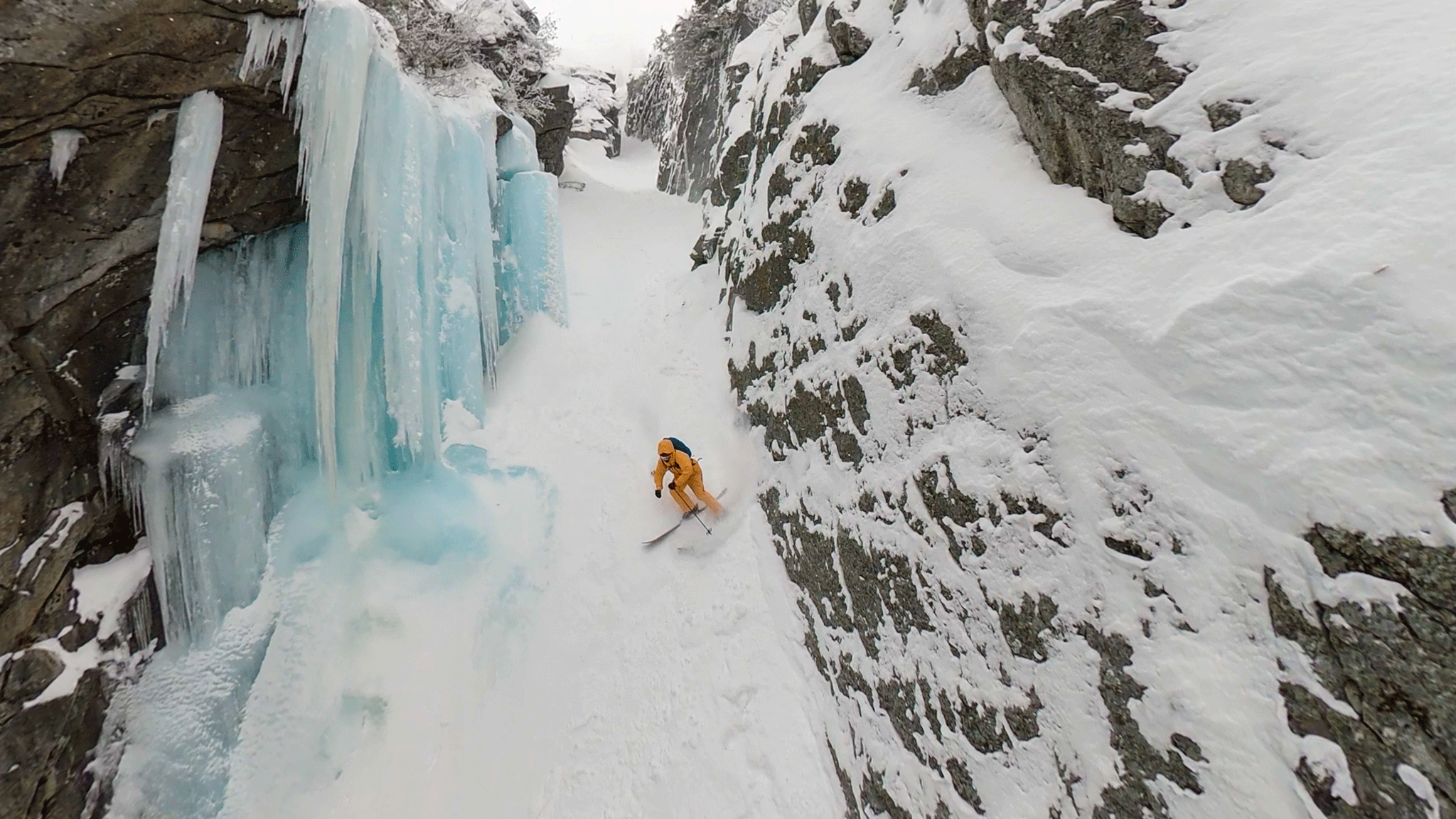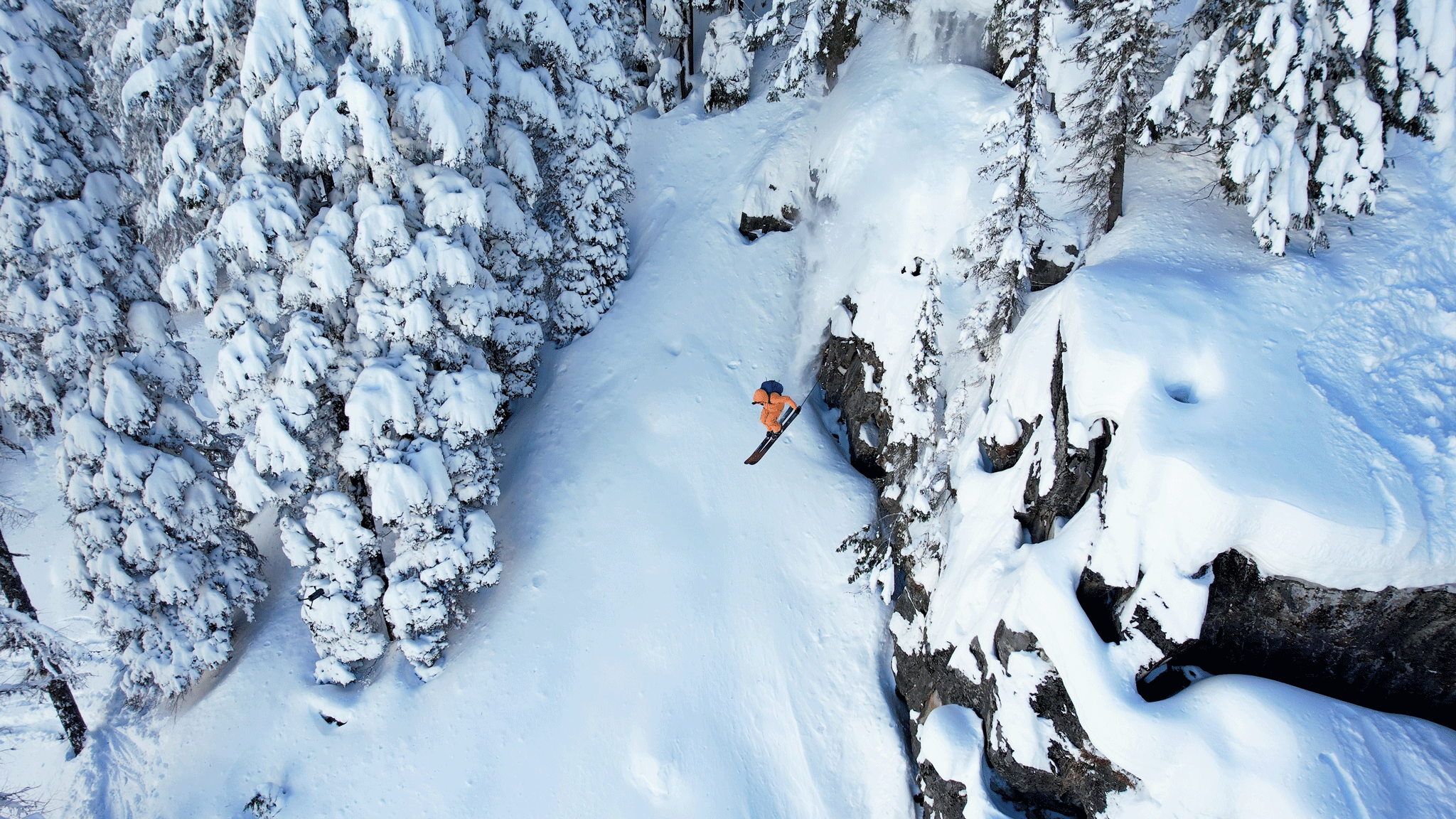Latest film showcases wild backcountry adventure
The Potato Boys, a hard charging, tight-knit crew of backcountry skiers, have gone and done it again.
They’ve taken their unique knack for capturing ski footage that brings viewers along on their wild adventures and created their third film, Famous Potatoes 2.0 — a Mostly Idaho Ski Film, a 15-minute movie building off of their first viral hit Famous Potatoes — An Idaho Ski Film.
This squad is composed of Essex Prescott, Blake Bowerman, Stephen Matkin and filmmakers Kyle Vandever and Cameron Hotchkiss. Over the past three years, these Coeur d’ Alene locals have been making a name for themselves in the ski world with their ski film series, Famous Potatoes.
Their films showcase the crew accessing and skiing some challenging backcountry terrain in North Idaho and, more recently, British Columbia.
Their exciting videography and skilled use of an aerial drone and GoPro cameras immerse their viewers in these adrenaline-filled moments.

You feel the nervousness as if you were there with them as they boot pack up a 50-degree snow-covered couloir, where one slip could be a 1,500-foot rag doll session. Or you find yourself reacting and bouncing as the Potato Boys get bucked like a bull rider while navigating through a snow-covered boulder field at full throttle.
>> Behind the scenes
It’s all hands on deck when it comes to filming the action. Essex, Blake and Stephen have become proficient using the cameras to get the shots. Cam and Kyle do an amazing job of shooting and stitching it all together to create a story.
Getting to these remote backcountry zones is a task in itself. It takes lots of time in front of a computer, researching and studying Google Earth as well as putting boots, or in this case, skis on the ground.
Scouting can involve motorcycles for summer recon, snowmobiles for winter access and even small-engine airplanes for getting intel on conditions in these extreme zones.
It was during the filming of their first movie when the crew quickly discovered how physically demanding it can be getting in and out of these remote areas in one day.
The time it takes and the toll on the body are significant, Essex explains.
“We’ll use snowmobiles for the first hour to get down the road or back into the drainage, then we’ll have to carry our gear and hike in the rest,” he explains. “It’s a lot to accomplish in a day on the body. Carrying that much gear, that far and then having to ski at a high level after that was exhausting and led to some very late nights.”
Story continues after a quick message from our sponsor below
>> Preparation counts
The Potato Boys have learned from the past and have integrated snow camping the past few winters. They use a teepee with a wood stove, Essex says.
“It’s a game changer, we can stay out for days. Now we don’t feel so rushed or physically drained.”
It’s actually more comfortable than it sounds, Stephen adds.
“You’re sleeping on snow, but you have a thermal pad under your bag,” he says. “We dig a couch into the snow and you’re sitting by a fire, and as long as that fire’s running, it’s 60 degrees in there and you’re just vibing.”

Transporting all the overnight gear is still a major challenge, so the boys have started using their aerial scouting missions as air drops to get their gear into the remote snow-covered backcountry.
The logistics can be challenging, Essex says.

“We fly the day before the storm hits, and we throw three bags out of the airplane, which has all our gear and food for the time we plan on spending out there,” he says. “Each bag also has an avalanche transceiver, so we can find them when we’re out there.”
Locating all of the bags in the snow can be difficult , depending on their aim, Blake adds, with a laugh.
“We hike at the tailend of the storm, which is usually about 5 to 6 miles,” he says. “We probably cover about 5,000 vert (vertical feet) with all the ups and downs in the topography. When we get to the zone where we dropped our bags, we all take out our (avalanche) beacons and start searching the area with a probe and a shovel trying to find it.”
They don’t put all their eggs in one basket. They spread out their gear and supplies in case they lose a bag.
>> Risky business
Skiing these uncharted areas comes with many risks. The Potato Boys’ avalanche awareness skills have to be on point since there’s not much, if any, data collected on many of these undiscovered zones they plan on skiing. Things can get sketchy.
And not everything pans out the way they hope. Their second film, Famous Potatoes – The Lost Season, was cut short during a challenging year and what they call “misadventure.”
“One thing I learned, an area that doesn’t see a lot of traffic, you don’t have a lot of data to go off,” Essex explains. “You’re on your own, getting a lot of the information yourself. We’d spend time going to these same places throughout the winter gathering data to understand how things were developing, what the snowpack was doing, how stuff was filling in, the approaches, the whole nine yards.”

>> New experiences
With the first two projects filmed entirely in the mountains of North Idaho, the Potato Boys decided to expand their search across the border into Canada for their latest movie.
The boys ventured to the backcountry of Whistler, B.C., which according to Blake was an eye-opening experience.
He recalls when they went up to the Rutherford glacier.
“The knee jerk reaction when we first got to the glacier, you see as much skiing as you could handle and more,” he says. “Then you look at something and the scale is completely different because things are so far away and they’re much bigger. You just feel like you’re in this fantasy land that doesn’t even compute in your brain. Growing up in North Idaho, where there’s trees and it’s denser like that, you get up there and it’s wide open and covered in snow. I’ve never seen anything like that.”
The Potato Boys relied on their ski skills and what they had learned over the years and jumped right into the big leagues when they were on the glacier, challenging themselves with some big, technical ski lines. They proved to themselves they have what it takes with their skiing and backcountry awareness.
Being out in the mountains with a crew who share the same passion is priceless.
“Man, the memories with my good friends are definitely a huge highlight, but I also take away how unique our backyard is and how cool it is where we live,” Essex says. “Not very many people can go and see the type of mountains we ski.”
Each year, the Potato Boys’ visual storytelling skills get better and better. The crew has some big plans for the 2023-24 winter season, and one thing is for sure, they’ll be sharing their next wild ski adventures with the rest of the world. Stay tuned. N
Story by Bob Lagasa



